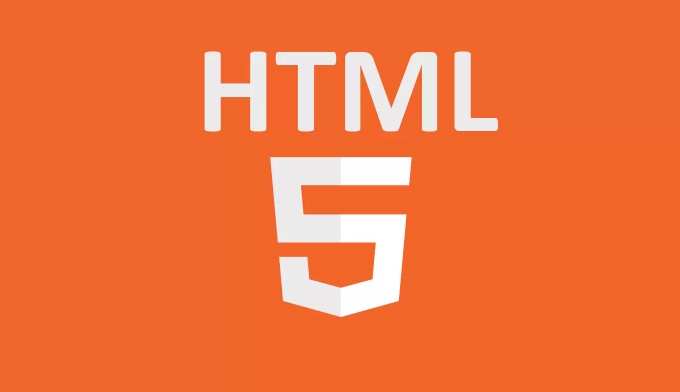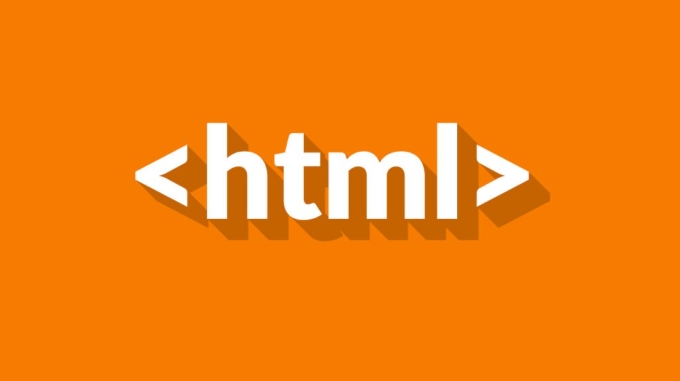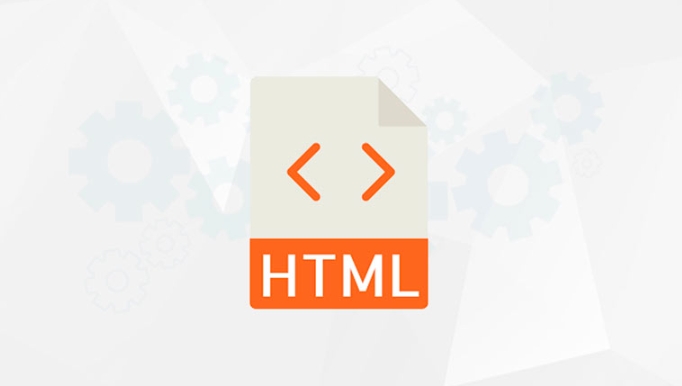HTML provides a variety of input types to meet different user input needs. 1. Common text input types include text, password, email, number, tel and url, which are suitable for input in various text and formats. 2. The input types related to time and date are date, time, datetime-local, month and week, providing a date selector to improve accuracy. 3. Select the class input type. The input type includes checkbox, radio, file and range, which are used for multiple selection, multiple selection, file upload and sliding adjustment. 4. Other practical types such as search, color, hidden and submit/reset/button are used for search boxes, color selection, hidden data transfer and form operation triggering respectively. Reasonable selection of these types can optimize user experience and data processing efficiency.

HTML provides a variety of input types for creating different user input fields in web forms. Each type determines the behavior, appearance, and what input is allowed. Choosing the right input type not only improves the user experience, but also helps the browser better handle data verification and interaction.

1. Common text input types
These are the most basic and common input types, suitable for receiving user text input:
- text : Used to enter single-line text, such as username, title, etc.
- password : Used when entering a password, the characters will be displayed in asterisks or dots.
- email : specially used to enter email addresses and supports automatic verification format.
- number : Only numbers are allowed to be entered, and the minimum value (min), maximum value (max) and step can be set.
- tel : Used to enter a phone number, different virtual keyboards may pop up on different devices.
- url : is used to enter the URL and also performs basic format verification.
These types of inputs are text input methods that are directly targeted to users, but each has different limitations and optimization scenarios.

2. Time and date-related input types
If you need the user to enter a time, date, or a combination of both, you can use the following types:
- date : Select the full date (year, month, day).
- time : Select only time (hours and minutes).
- datetime-local : Select date and time, not including time zone.
- month : Select year and month.
- week : Choose a week of the year.
These inputs are usually displayed as a date selector control in modern browsers, which facilitates precise selection by the user and reduces the possibility of manual input errors.

3. Select the class input type
This type of input is mainly used to allow users to choose from multiple options:
- checkbox : Multiple selection boxes, users can select multiple options.
- radio : radio buttons, only one option can be selected in a group.
- file : Allows users to upload files, which are often used for submissions such as pictures and documents.
- range : Sliding bar, suitable for adjusting continuous values ??such as volume and brightness.
When using these types, it is recommended to use the <label></label> tag to enhance clickable areas and semantic clarity.
4. Other practical input types
There are also some less common but useful input types:
- search : used for search boxes, visually similar to text, but has clear buttons in some browsers.
- color : Color selector, allowing users to select a color value.
- hidden : Hide fields, not displayed on the page, but data can be passed when the form is submitted.
- submit / reset / button : used to trigger form operations. Although it is not the type of input data, it is also part of input.
These types are very useful in specific scenarios, such as color that can quickly implement theme color selection.
Basically these common HTML input types. Although it seems a lot, it is not complicated to choose the right type according to actual needs. The key is to consider more user input habits and browser support during the development process.
The above is the detailed content of What are the different input types in HTML?. For more information, please follow other related articles on the PHP Chinese website!

Hot AI Tools

Undress AI Tool
Undress images for free

Undresser.AI Undress
AI-powered app for creating realistic nude photos

AI Clothes Remover
Online AI tool for removing clothes from photos.

Clothoff.io
AI clothes remover

Video Face Swap
Swap faces in any video effortlessly with our completely free AI face swap tool!

Hot Article

Hot Tools

Notepad++7.3.1
Easy-to-use and free code editor

SublimeText3 Chinese version
Chinese version, very easy to use

Zend Studio 13.0.1
Powerful PHP integrated development environment

Dreamweaver CS6
Visual web development tools

SublimeText3 Mac version
God-level code editing software (SublimeText3)

Hot Topics
 How can CSS be used to implement dark mode theming on a website?
Jun 19, 2025 am 12:51 AM
How can CSS be used to implement dark mode theming on a website?
Jun 19, 2025 am 12:51 AM
ToimplementdarkmodeinCSSeffectively,useCSSvariablesforthemecolors,detectsystempreferenceswithprefers-color-scheme,addamanualtogglebutton,andhandleimagesandbackgroundsthoughtfully.1.DefineCSSvariablesforlightanddarkthemestomanagecolorsefficiently.2.Us
 Can you explain the difference between em, rem, px, and viewport units (vh, vw)?
Jun 19, 2025 am 12:51 AM
Can you explain the difference between em, rem, px, and viewport units (vh, vw)?
Jun 19, 2025 am 12:51 AM
The topic differencebetweenem, Rem, PX, andViewportunits (VH, VW) LiesintheirreFerencepoint: PXISFixedandbasedonpixelvalues, emissrelative EtothefontsizeFheelementoritsparent, Remisrelelatotherootfontsize, AndVH/VwarebaseDontheviewporttimensions.1.PXoffersprecis
 What are CSS Houdini APIs, and how do they allow developers to extend CSS itself?
Jun 19, 2025 am 12:52 AM
What are CSS Houdini APIs, and how do they allow developers to extend CSS itself?
Jun 19, 2025 am 12:52 AM
CSSHoudini is a set of APIs that allow developers to directly manipulate and extend the browser's style processing flow through JavaScript. 1. PaintWorklet controls element drawing; 2. LayoutWorklet custom layout logic; 3. AnimationWorklet implements high-performance animation; 4. Parser&TypedOM efficiently operates CSS properties; 5. Properties&ValuesAPI registers custom properties; 6. FontMetricsAPI obtains font information. It allows developers to expand CSS in unprecedented ways, achieve effects such as wave backgrounds, and have good performance and flexibility
 What is the significance of Vue's reactivity transform (experimental, then removed) and its goals?
Jun 20, 2025 am 01:01 AM
What is the significance of Vue's reactivity transform (experimental, then removed) and its goals?
Jun 20, 2025 am 01:01 AM
ReactivitytransforminVue3aimedtosimplifyhandlingreactivedatabyautomaticallytrackingandmanagingreactivitywithoutrequiringmanualref()or.valueusage.Itsoughttoreduceboilerplateandimprovecodereadabilitybytreatingvariableslikeletandconstasautomaticallyreac
 How can CSS gradients (linear-gradient, radial-gradient) be used to create rich backgrounds?
Jun 21, 2025 am 01:05 AM
How can CSS gradients (linear-gradient, radial-gradient) be used to create rich backgrounds?
Jun 21, 2025 am 01:05 AM
CSSgradientsenhancebackgroundswithdepthandvisualappeal.1.Startwithlineargradientsforsmoothcolortransitionsalongaline,specifyingdirectionandcolorstops.2.Useradialgradientsforcirculareffects,adjustingshapeandcenterposition.3.Layermultiplegradientstocre
 What are the key differences between inline, block, inline-block, and flex display values?
Jun 20, 2025 am 01:01 AM
What are the key differences between inline, block, inline-block, and flex display values?
Jun 20, 2025 am 01:01 AM
Choosing the correct display value in CSS is crucial because it controls the behavior of elements in the layout. 1.inline: Make elements flow like text, without occupying a single line, and cannot directly set width and height, suitable for elements in text, such as; 2.block: Make elements exclusively occupy one line and occupy all width, can set width and height and inner and outer margins, suitable for structured elements, such as; 3.inline-block: has both block characteristics and inline layout, can set size but still display in the same line, suitable for horizontal layouts that require consistent spacing; 4.flex: Modern layout mode, suitable for containers, easy to achieve alignment and distribution through justify-content, align-items and other attributes, yes
 How can internationalization (i18n) and localization (l10n) be implemented in a Vue application?
Jun 20, 2025 am 01:00 AM
How can internationalization (i18n) and localization (l10n) be implemented in a Vue application?
Jun 20, 2025 am 01:00 AM
InternationalizationandlocalizationinVueappsareprimarilyhandledusingtheVueI18nplugin.1.Installvue-i18nvianpmoryarn.2.CreatelocaleJSONfiles(e.g.,en.json,es.json)fortranslationmessages.3.Setupthei18ninstanceinmain.jswithlocaleconfigurationandmessagefil
 How does provide and inject allow for deep component communication without prop drilling in Vue?
Jun 20, 2025 am 01:03 AM
How does provide and inject allow for deep component communication without prop drilling in Vue?
Jun 20, 2025 am 01:03 AM
In Vue, provide and inject are features for directly passing data across hierarchical components. The parent component provides data or methods through provide, and descendant components directly inject and use these data or methods through inject, without passing props layer by layer; 2. It is suitable for avoiding "propdrilling", such as passing global or shared data such as topics, user status, API services, etc.; 3. Note when using: non-responsive original values ??must be wrapped into responsive objects to achieve responsive updates, and should not be abused to avoid affecting maintainability.






